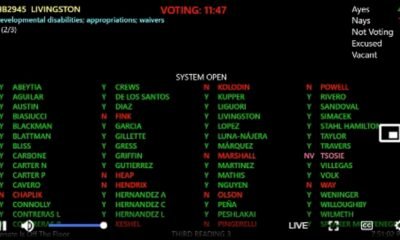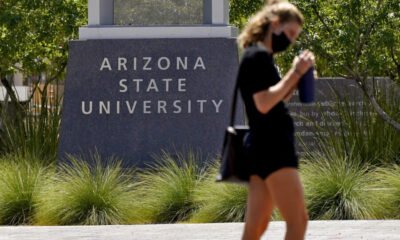Business
Utah’s Bold Quest to Claim Millions of Acres from Federal Control

Utah officials have ignited a contentious debate by asking the U.S. Supreme Court to transfer millions of acres of federal land to state ownership. This request challenges over a century of legal precedents and Utah’s own constitution, suggesting the possibility of significant changes in land management across the West.
The lands in question constitute more than two-thirds of Utah, amounting to approximately 18.5 million acres managed by the U.S. Bureau of Land Management (BLM). State officials argue that the federal government has been unjustly withholding potential revenue by preventing local management of the land for activities like grazing and energy production. They perceive the current federal hold as a long-term strategy for profit rather than public service.
If the Supreme Court considers Utah’s case, the ruling could reshape ownership claims not only in Utah but also across lands managed by other federal agencies nationwide. To succeed, Utah must establish that it never intended to relinquish rights to the contested lands.
In August, when bringing their case to the Supreme Court, Utah leaders claimed that the federal government made “express and implied promises” regarding state land jurisdiction upon Utah’s admission to the union. However, the state constitution explicitly states that residents “forever disclaim all right and title to the unappropriated public lands” within its boundaries, designating them as federally owned.
This legal battle has emerged amid a rising sentiment favoring state rights and skepticism toward the federal government. Skeptics like Stephen Bloch of the Southern Utah Wilderness Alliance deem the lawsuit a misguided effort, arguing that existing law firmly supports federal land management.
Legal expert John Leshy, former interior department chief attorney, expressed concerns about the ambiguous legal definitions central to Utah’s claims. “What Utah is asserting hinges on ill-defined terms like ‘appropriated’ and ‘unappropriated,'” he noted, criticizing the lawsuit as lacking coherent legal grounding.
The affair is reminiscent of the “Sagebrush Rebellion” of the 1980s, a movement advocating for state control over federal lands in the West. This rebirth of such sentiments may find new life under a conservative Supreme Court, with hopes resting on the appointments made during the Trump presidency.
Utah’s sustained push for control over BLM lands isn’t new. Skeptics refer to the state’s long-standing goal of managing iconic landscapes like the San Rafael Swell and Valley of the Gods, arguing that state control would drastically change how these areas are preserved and utilized.
Statistics reveal a complex picture. According to recent polling data from Colorado College, 84% of Utah residents support the establishment of new national parks and monuments, contradicting the official narrative touted by Utah’s congressional delegation, which frames federal land as a barrier to state sovereignty.
Further complicating matters, the Ute Indian Tribe has filed a motion to intervene, claiming that Utah’s request implicates 1.5 million acres of tribal lands. The tribe argues that these lands, historically significant to their community, must not be counted among those sought by the state.
The lawsuit itself raises questions about federal authority and historical claims. Utah asserts that the federal government is unlawfully withholding land, but the Justice Department contends the state already waived any claim to such lands upon achieving statehood. Careful historical scrutiny reveals that much of what Utah seeks control over was never rightfully theirs to claim.
As this contentious legal battle unfolds, the implications of the Supreme Court’s decision could redefine state and federal land management across the West. Utah’s elected officials find themselves at a crossroads, weighing the desires of constituents against the legal realities surrounding land ownership.


















